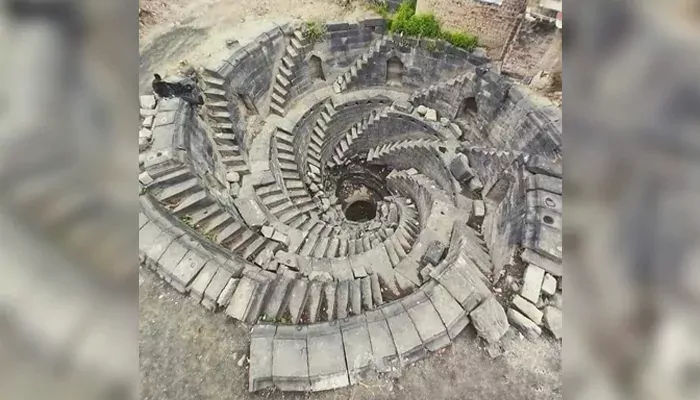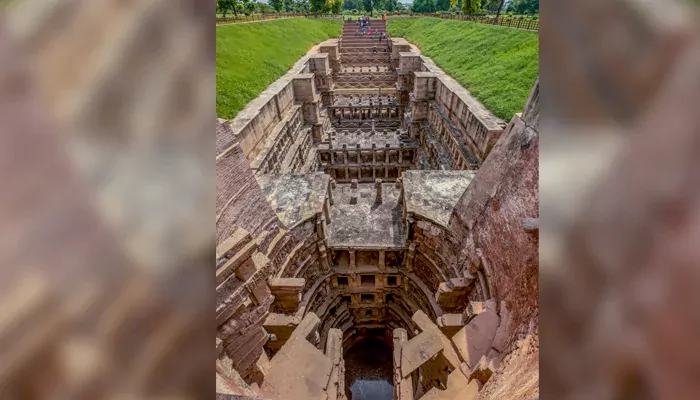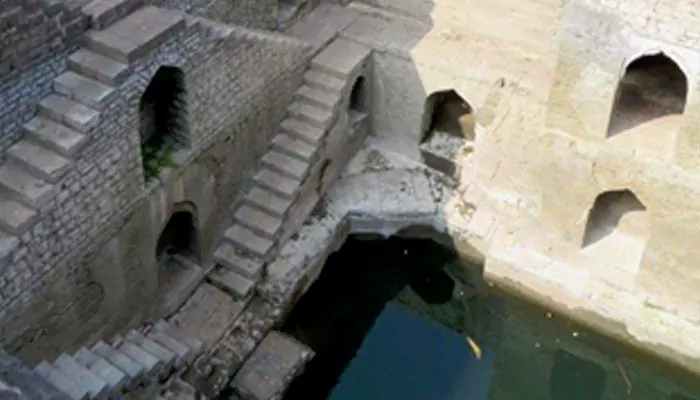
When the British came knocking, entire communities found refuge in the shadows of stone.
We’ve all heard stories of how freedom fighters would vanish into forests or flee across rivers to escape the British. But even more fascinating is how entire villages, not just individuals, disappeared right beneath the ground. In parts of India, ancient stepwells (those deep, beautifully carved structures built to store water) became secret shelters during British raids. These were multi-level sanctuaries, with hidden chambers and passages. When the redcoats marched in, families would carry their kids, food, even animals down the steps, waiting in silence until the danger passed. For hours, sometimes days, they waited out the storm in silence, and no one looking from above would ever know. Today, these stone stairways might seem like relics of the past, but buried in their depths are stories of resistance and survival.
As India gears up to celebrate its 79th Independence Day, let’s revisit the forgotten stepwells that once hid entire villages during British raids.
To the untrained eye, a stepwell (vav, baoli, or bawri in local languages) might seem like an elegant old ruin. But descend its zigzagging steps, and you enter another world. Cool air replaces the heat above, light dances on moss-covered stone, and intricate carvings of gods, dancers, and flowers tell stories on the walls.
These structures, built centuries ago across Gujarat, Rajasthan, Madhya Pradesh, and Delhi, were ingenious responses to a thirsty land. Unlike typical wells, stepwells went deep underground, sometimes seven stories or more, with grand staircases descending toward the water. Some were built by kings, others by queens, in memory of loved ones. And all were built to last.

“Stepwells are temples to water,” says architectural historian Jutta Jain-Neubauer, who has spent decades studying them. “But in times of danger, they became temples to life itself.”
In 1857, India erupted in revolt. Soldiers and civilians alike rose against the East India Company. And the British response was brutal. Villages suspected of harboring rebels were burned. Men were shot, women detained, and entire settlements punished. But in this storm of violence, some communities found a lifeline underground.
Many stepwells had hidden recesses, with storage rooms, meditation chambers, and dark corners rarely noticed by outsiders. Locals knew them well. In fact, some had grown up playing hide-and-seek in their depths. During the uprising, these ancient water temples became places of refuge. In Gujarat and Rajasthan, oral histories tell stories of these hidden acts of resistance.
The British, unfamiliar with the complexity of Indian stepwells, often overlooked them entirely. Their staircases were sometimes concealed behind village temples or brush.
Adalaj ni Vav, Gujarat: A short drive from Ahmedabad will take you to one of India’s most beautiful stepwells, built in 1499 by Queen Rudabai. Five stories deep, it’s a mix of Hindu and Islamic design, with floral columns, geometric railings, and alcoves.
But beauty isn’t all it hides. According to local legends, during the 1857 revolt, villagers used Adalaj’s depths to conceal rebels and resistors. “The darkness saved us,” says one tale. “Even the British feared to descend too far.”
𝐀𝐝𝐚𝐥𝐚𝐣 𝐍𝐢 𝐕𝐚𝐯 has numerous intriguing traits that make it a prominent symbol of great architecture. Here we bring some of the features of Adalaj ni Vav that make this stepwell unique.#gujarattourism #gujarat #IncredibleIndia #DekhoApnaDesh #adalajnivav #Travel pic.twitter.com/hFjx0LIq6c
— Gujarat Tourism (@GujaratTourism) January 20, 2023
(Credit: Gujarat Tourism)
Author Victoria Lautman, who documented over 200 such wells in her book 'The Vanishing Stepwells of India', notes: “It was a place where you could disappear, quite literally.”
Rani ki Vav, Patan: Now a UNESCO World Heritage Site, Rani ki Vav is often praised for its sculptural brilliance. Built in the 11th century by Queen Udayamati, its walls are adorned with over 1,500 carvings, from gods to mythic scenes. But during the Revolt of 1857, the stories say, its deep chambers gave shelter to local families. “The British didn’t understand these structures,” one Patan guide explained in an interview, adding, “They saw art, not strategy.”
11th Century Rani Ki Vav, Gujarat pic.twitter.com/mA6H30MXuv
— BharatKeMandir (@bharatkemandir) February 9, 2025
(Credit: BharatKeMandir)
Agrasen ki Baoli, Delhi: Hidden amid Connaught Place’s colonial buildings and urban chaos is this haunting stepwell of 103 steps. It’s dry now, echoing only with bats and the chatter of tourists. Believed to date back to the Mahabharata era and later rebuilt in the 14th century, the baoli has long been associated with mystery. Local families still claim their ancestors used it to hide during British raids. It’s impossible to verify but easy to believe, standing inside its hushed depths.
Descending through arched niches and symmetrical passages showcasing Indo-Islamic design, Agrasen ki Baoli, located in the heart of Delhi, once conserved water while serving as a vital social and cultural space during droughts. #AgrasenKiBaoli #AncientArchitecture #HiddenGems pic.twitter.com/zx8TH53utF
— Centre for Strategy and Leadership (@CSL_IN_Official) June 20, 2025
(Credit: Centre for Strategy and Leadership)
Ujala Baoli, Mandu: In Madhya Pradesh, Mandu’s romantic ruins draw the occasional curious traveler. Among them is Ujala Baoli, a forgotten stepwell near the famed Jahaz Mahal. Its name (Ujala, or “light”) hints at the play of sunlight on its waters. Though few tourists visit, locals say that during later colonial raids, it became a hiding place for tribal resistors and displaced families. The stories live on in memory, if not in history books.

Because they were never written down. The British chronicled battles and rebellions from their perspective, erasing acts of indigenous ingenuity that didn’t fit their narrative of conquest. Textbooks focused on grand victories and famous martyrs. Survival stories like these didn’t make the cut.
In post-independence India, modernization pushed stepwells further into obscurity. Tube wells and modern plumbing replaced them. Some were filled with garbage, others collapsed into ruins. Even the ones restored (like Rani ki Vav or Toorji ka Jhalra in Jodhpur) are appreciated more for their visual beauty than their hidden histories.
Notably, organizations like the Archaeological Survey of India and conservationists like Victoria Lautman are trying to preserve these marvels. Restoration efforts are growing.